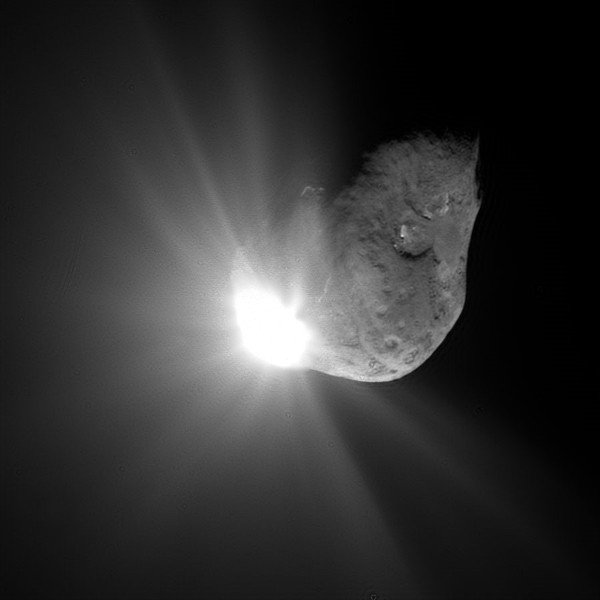Jars to Stars

This article is so far off task that I thought of defining a new category, Way the Hell Off Topic, to complement Slightly Off Topic. But I want to alert anyone who may be interested in the publication of a new book, From Jars to the Stars, by Todd Neff, a book about Ball Aerospace and how they came to shoot a projectile at a comet – and hit it.
Neff, a former science reporter for the Boulder Daily Camera, has crafted a book that follows the fortunes of Ball Aerospace from before its inception until they managed to strike the comet Tempel 1 on July 4, 2005. As Neff describes it, hitting that comet was a bit harder than hitting a bullet in flight, because the comet itself has no fixed orbit, but rather is buffeted significantly by the evaporation of gases as it approaches the sun.
I may have been interested in the book partly because Ball is located just around the corner, in Boulder, Colorado, and I have met a few of the protagonists, though not as many as I had expected. But the book has more than parochial interest, because it describes in microcosm the growth of the space industry from its beginning, in this case, in the rocket lab at the University of Colorado in 1951, to the successful completion of the Deep Impact probe, which struck the comet with a projectile and also detected the resulting explosion with spectrometers and other instruments.
Neff’s book is a good blend of science and technology, organization and management, and biography. As far as I can tell, he gets virtually all the science right and presents it clearly, and I thought he included just enough biographical detail to make the protagonists human. The most remarkable thing about the project, though, is the false starts, the changes of direction, and the seemingly superhuman effort put in by some of the protagonists.
I did not find the first few chapters about the rocket lab very compelling, however, possibly because the book does not begin with a proper introduction and I had no clear idea where Neff was heading. Following advice I once got from a well-known author, I persevered until I got to page 70, by which time I was deeply engrossed in the book. The book itself is fairly well designed, though the index would have been better if some of the longer entries had been divided into several subentries (and also if they had skipped a line between letters of the alphabet). The book is also generally well edited, but it is marred by a handful of misspellings, such as Fritz Zernicke for Frits Zernike.
